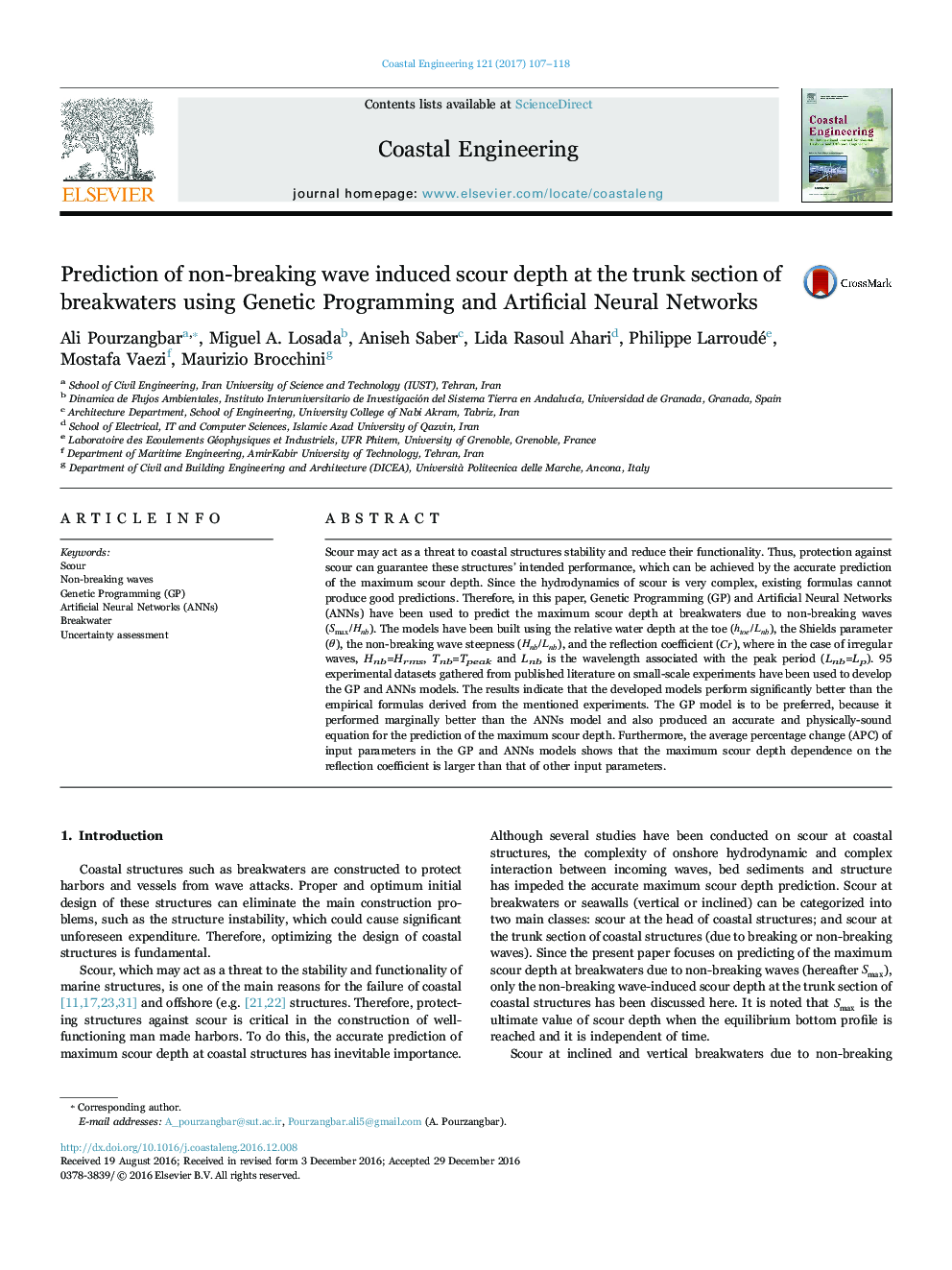| Article ID | Journal | Published Year | Pages | File Type |
|---|---|---|---|---|
| 5473388 | Coastal Engineering | 2017 | 12 Pages |
Abstract
Scour may act as a threat to coastal structures stability and reduce their functionality. Thus, protection against scour can guarantee these structures' intended performance, which can be achieved by the accurate prediction of the maximum scour depth. Since the hydrodynamics of scour is very complex, existing formulas cannot produce good predictions. Therefore, in this paper, Genetic Programming (GP) and Artificial Neural Networks (ANNs) have been used to predict the maximum scour depth at breakwaters due to non-breaking waves (Smax/Hnb). The models have been built using the relative water depth at the toe (htoe/Lnb), the Shields parameter (θ), the non-breaking wave steepness (Hnb/Lnb), and the reflection coefficient (Cr), where in the case of irregular waves, Hnb=Hrms, Tnb=Tpeak and Lnb is the wavelength associated with the peak period (Lnb=Lp). 95 experimental datasets gathered from published literature on small-scale experiments have been used to develop the GP and ANNs models. The results indicate that the developed models perform significantly better than the empirical formulas derived from the mentioned experiments. The GP model is to be preferred, because it performed marginally better than the ANNs model and also produced an accurate and physically-sound equation for the prediction of the maximum scour depth. Furthermore, the average percentage change (APC) of input parameters in the GP and ANNs models shows that the maximum scour depth dependence on the reflection coefficient is larger than that of other input parameters.
Keywords
Related Topics
Physical Sciences and Engineering
Engineering
Ocean Engineering
Authors
Ali Pourzangbar, Miguel A. Losada, Aniseh Saber, Lida Rasoul Ahari, Philippe Larroudé, Mostafa Vaezi, Maurizio Brocchini,
